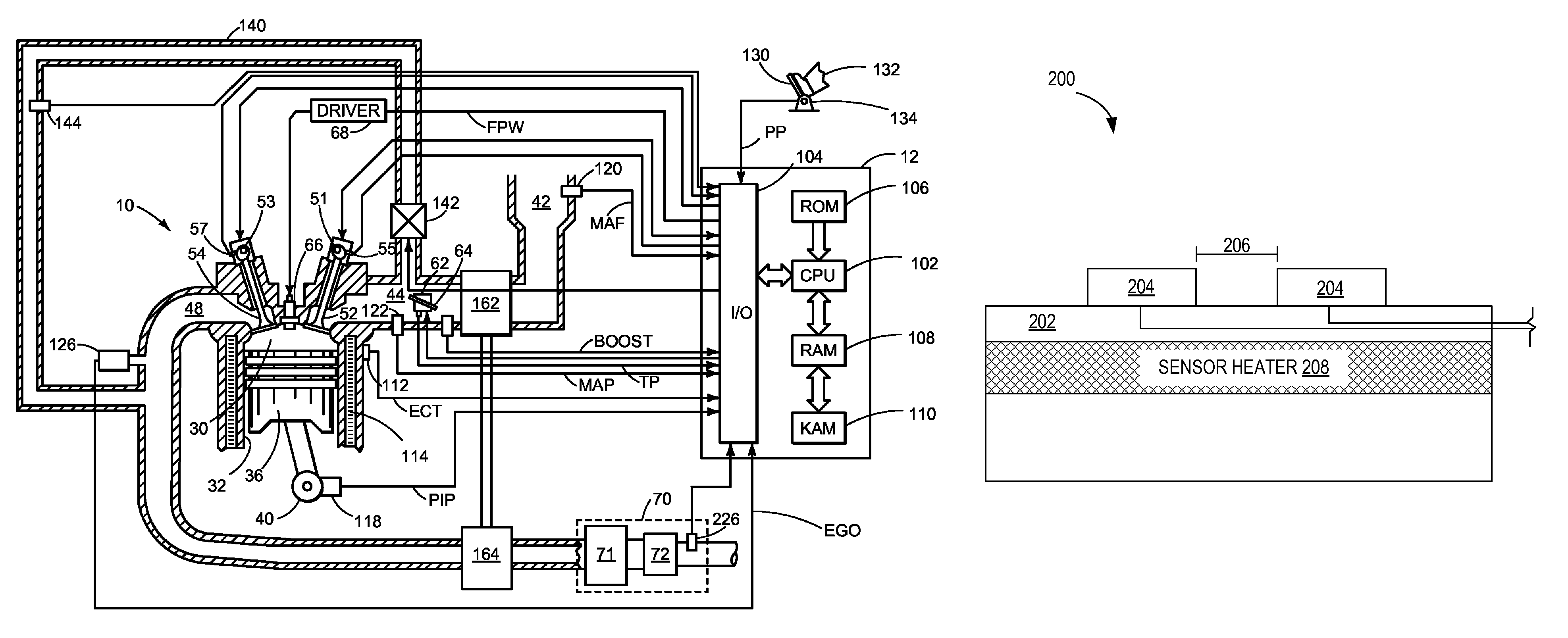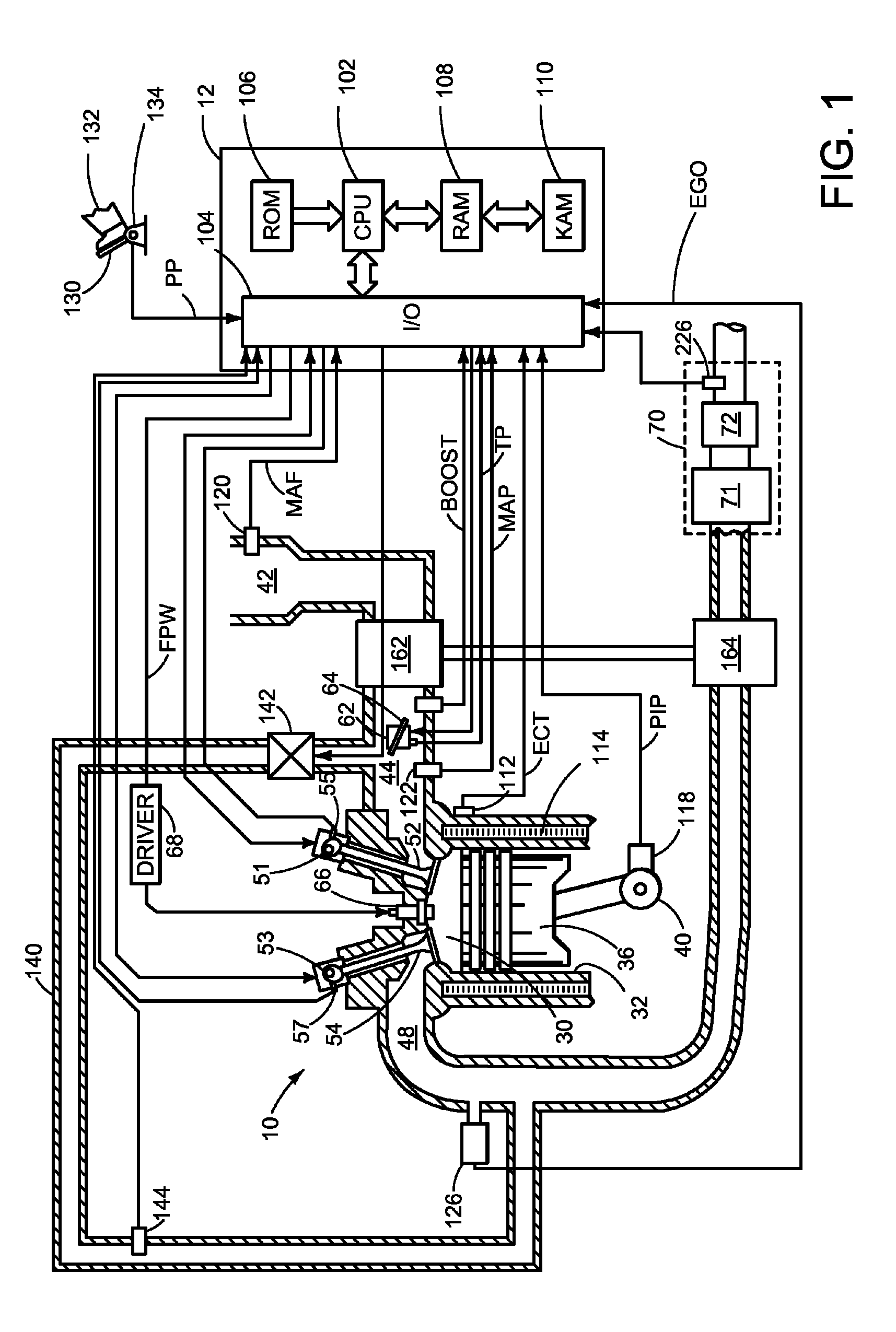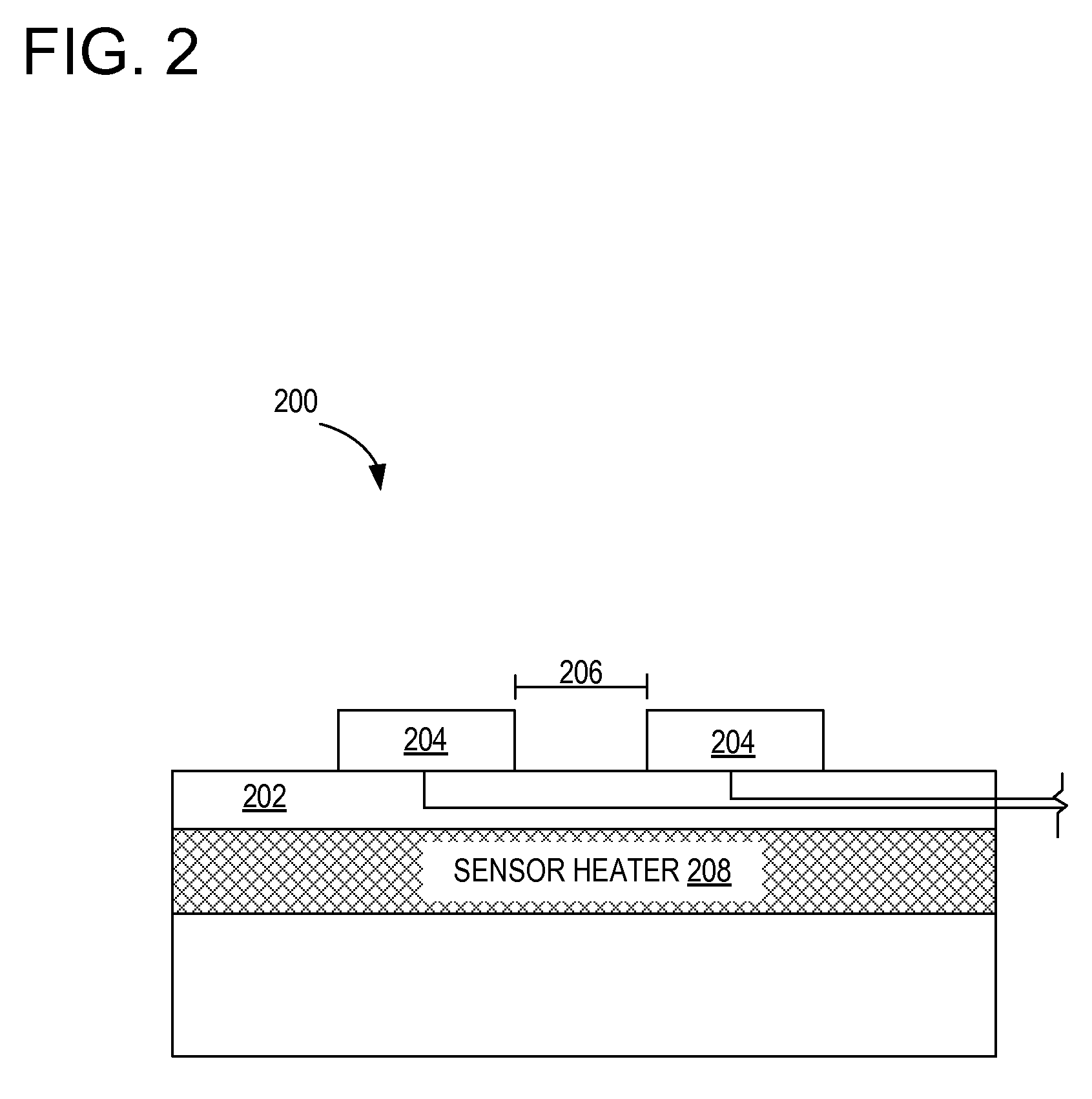Emission control with a particulate matter sensor
a technology of particulate matter and emission control, applied in the field of emission control systems, can solve the problems of sensor reading inaccuracy, over-temperature and under-temperature conditions may still occur, etc., and achieve the effects of avoiding excess heating, saving energy, and facilitating operation
- Summary
- Abstract
- Description
- Claims
- Application Information
AI Technical Summary
Benefits of technology
Problems solved by technology
Method used
Image
Examples
Embodiment Construction
[0016]The following description relates to a particulate matter (PM) sensor regeneration system, and operation thereof. As described in more detail below, a PM sensor measures the mass or concentration of PM (soot) within an exhaust system of an internal combustion engine. Periodically, particles accumulate on a substrate of the PM sensor, and the sensor must be heated to burn off, oxidize, or otherwise drive-off the accumulated PM. In this way, the PM sensor may be regenerated by controlling the temperature of the PM sensor. During such sensor regeneration cycles, the sensor output no longer indicates soot loading in the exhaust, but rather can be used to determine whether proper regeneration conditions are being maintained. For example, the sensor output can indicate over-temperature and / or under-temperature, which can then be used to control the level of sensor heating to better maintain proper temperature control.
[0017]FIG. 1 is a schematic diagram showing one cylinder of multi-...
PUM
| Property | Measurement | Unit |
|---|---|---|
| conductivity | aaaaa | aaaaa |
| energy | aaaaa | aaaaa |
| mass | aaaaa | aaaaa |
Abstract
Description
Claims
Application Information
 Login to View More
Login to View More - R&D
- Intellectual Property
- Life Sciences
- Materials
- Tech Scout
- Unparalleled Data Quality
- Higher Quality Content
- 60% Fewer Hallucinations
Browse by: Latest US Patents, China's latest patents, Technical Efficacy Thesaurus, Application Domain, Technology Topic, Popular Technical Reports.
© 2025 PatSnap. All rights reserved.Legal|Privacy policy|Modern Slavery Act Transparency Statement|Sitemap|About US| Contact US: help@patsnap.com



